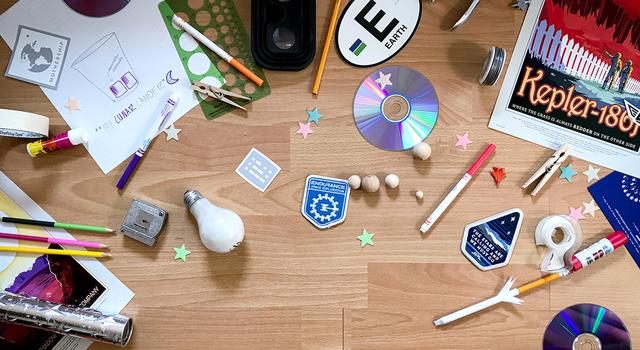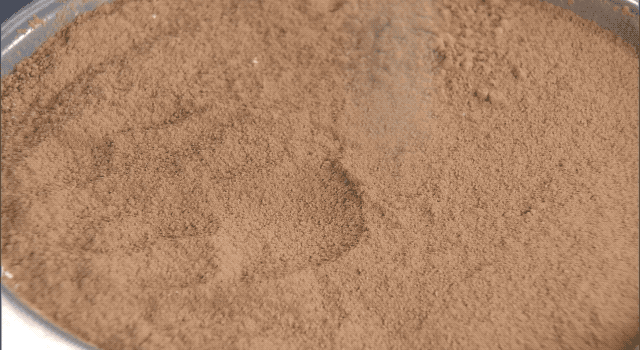project
Imagine You're an Astronaut
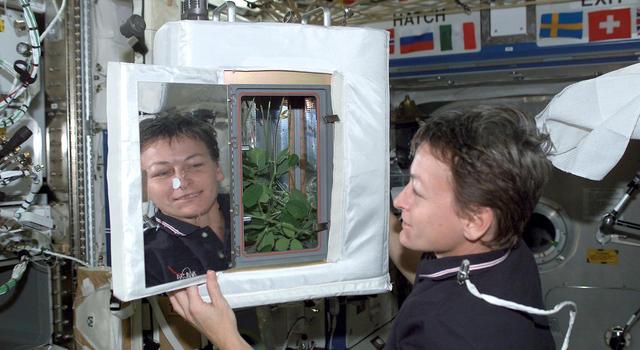
1. Keep learning
Astronauts are constantly learning. They do all the science experiments that need to happen on the space station. Most of the time, these experiments were designed by someone else, so astronauts need to learn about the science they are doing to follow the right steps and share the results. Astronauts also need to learn how to operate parts of the space station, such as the robotic arm.
How can you keep learning? Can you read a book? Do homework from your teacher? Have an astronaut read you a book?
Learn more about life on the space station here.
About the Image: NASA Astronaut Peggy Whitson looks at a soybean-plant growth experiment on the International Space Station.
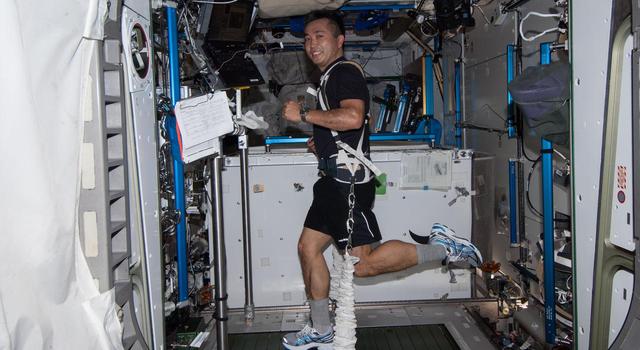
2. Exercise
Astronauts need to keep their muscles strong when they’re in space. One way they do this is by running on a treadmill. The treadmill has bungee cords that hold the astronauts down so they don’t float away.
You can keep your muscles strong, too. Do some jumping jacks, pushups, situps, or walk and jog in place so that you’ll be strong enough when you can go exploring.
What other exercises can you do indoors? Make an exercise plan for yourself and your fellow astronauts and monitor your progress. Plus, learn more about how and why astronauts exercise in space.
About the Image: Astronaut Koichi Wakata exercises on the space station's treadmill. Wakata is an astronaut with the Japan Aerospace Exploration Agency, or JAXA.
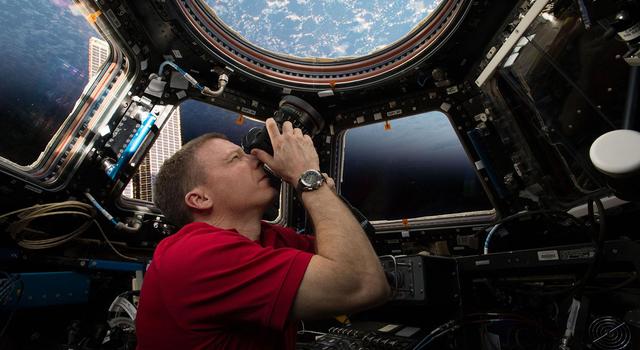
3. Observe Earth
Astronauts love to take pictures and videos of Earth from the window of the space station. Seeing Earth in new ways gets them thinking about what makes our planet unique and special.
You can take pictures from your window, too. Think about what makes your street, neighborhood or city unique and take note of the patterns you see. How are the trees and plants changing from day to day? How do the shapes and colors of the clouds change? (Identify what kinds of clouds they are and make a cloud mobile.) Do you see birds, squirrels or other creatures? What do you notice about them?
Here are some photos of Earth that were taken by astronauts.
About the Image: NASA astronaut Terry Virts takes a photograph from the window of the space station. Virts set the record for the most photos ever taken by an astronaut during a space mission.

4. Stay in touch
Astronauts keep in touch with their families by email and videoconference.
You can keep in touch with your family and friends by email, phone and video chat or by writing letters and drawing pictures. Make a list of the friends and relatives you want to stay in touch with. Call or write to a few people every day. They will be glad to know you are thinking about them.
You can also keep a journal of what you do every day, just like the astronauts do.About the Image: NASA astronaut Christina Koch shared this photo of herself relaxing on the space station after a busy work week.
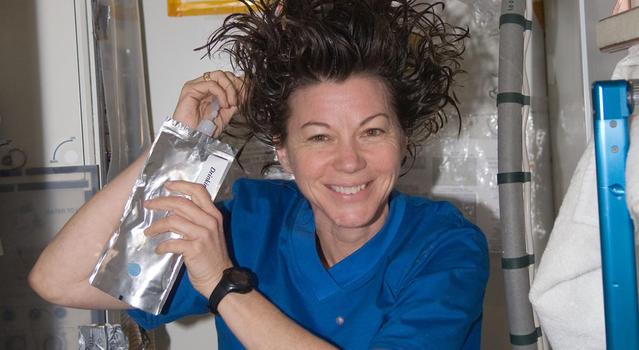
5. Stay clean
We all need to stay clean, no matter where we are. We wash our hands with warm water and soap. We brush our teeth. We take baths or showers.
Astronauts have special ways to keep clean while they’re in space. Everything floats on the space station – even water! – so astronauts in space can’t just hop in the shower or use a sink to wash their hands, so they need to get creative. Watch this video to see how astronauts wash their hair in space. Watch these videos to learn more about an astronaut’s morning routine.
About the Image: NASA astronaut Catherine (Cady) Coleman washes her hair while aboard the International Space Station.

6. Get supplies
Every few months, a spacecraft travels up to the space station to bring supplies from Earth that astronauts need. During these "resupply missions," astronauts get fresh fruit – a real treat! – new experiments to work on, clean clothes to wear, clean water to drink and food to eat until the next resupply mission comes, plus a few other treats from home.
If you could plan a resupply mission for your home, what would be the most important items to include?
About the Image: NASA astronaut Scott Kelly poses with fresh fruit brought to the space station during a resupply mission.
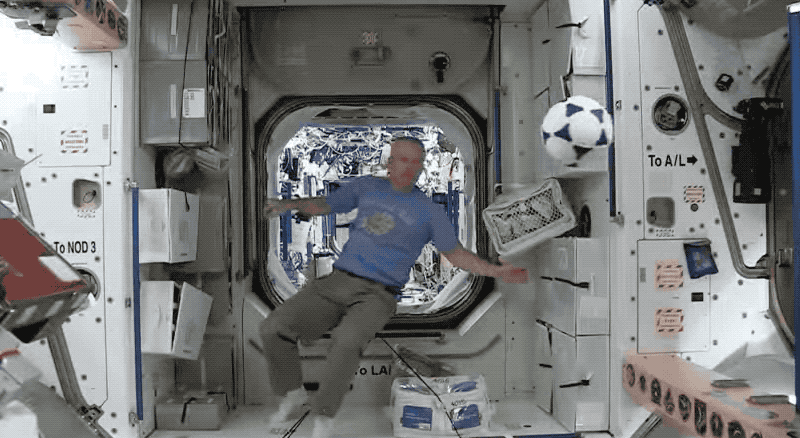
7. Take time for fun
Relaxation and fun are important, whether you’re in space or on Earth. Astronauts have some time every day to relax and do whatever they enjoy most.
Learn more about some of the hobbies astronauts do in space. Learn how some of your favorite toys behave in space.
What do you like to do for fun? What activities are most relaxing for you?
About the Image: NASA astronaut Steve Swanson and German astronaut Alexander Gerst play soccer on the space station as they get ready to cheer for their teams in the 2014 World Cup.
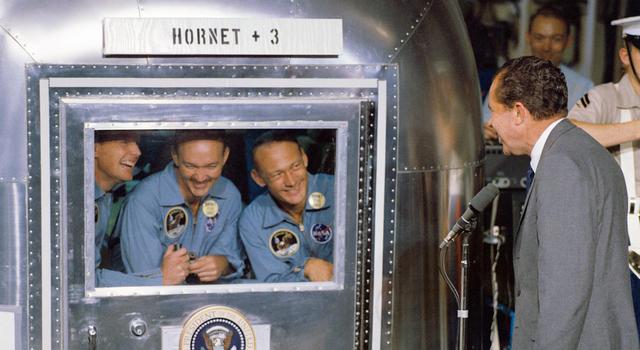
8. But wait, there's more!
Here are some things you can do at home that astronauts on the space station can’t do:
- Open a window. This is definitely not recommended for astronauts, who have the vacuum of space outside their window!
- Breathe fresh air. Although the air on the space station is filtered, it’s the same air that’s been there for more than 20 years.
- Wash your clothes. Can you believe there’s no way to do laundry in space?
- Walk. Okay, floating is cool, but sometimes it’s nice to be able to walk around.
What else can you think of that you can do but astronauts in space can’t do?
About the Image: President Richard Nixon welcomes the Apollo 11 astronauts (from left), Neil A. Armstrong, Michael Collins and Edwin (Buzz) E. Aldrin, after their return from the Moon in 1969. The astronauts were required to spend 21 days in quarantine to be sure nothing hitched a ride with them from the Moon.

Explore More
- Stay hydrated! Astronauts need to drink water when they’re in space. So do you. Drink lots of water. If you wonder how water acts differently on the space station than it does on Earth, watch this video by astronaut Chris Hadfield.
- Grow food. Astronauts are learning how to grow food in the microgravity of space. Astronauts on the space station conducted experiments to grow tomato seeds and basil seeds in space. Students grew seeds on Earth at the same time to compare how they grew in both environments. You can plant seeds and grow your own fruits and vegetables. Learn more about astronauts growing plants in space.
- If you have flour, water and salt, you can make your own play dough. You can sculpt your own planets, moons, rockets, satellites, astronauts and more. Here’s a scale model of the solar system you can make with play dough.
- If you have paper, you can learn how to do origami, the Japanese art of paper folding. Did you know that NASA has origami experts who help figure out how to fit large spacecraft into the tight spaces on rockets?
- If you have paper and a pencil, crayons, colored pencils, markers, pastels, chalk or other art supplies, you can draw planets and moons.
- If you have empty tissue boxes or other cardboard, paper towel tubes, scissors and glue, you can design your own Mars rover.
- If you have access to a computer, you can explore all of the planets in the solar system and the NASA spacecraft that study them with free NASA’s Eyes on the Solar System software.





